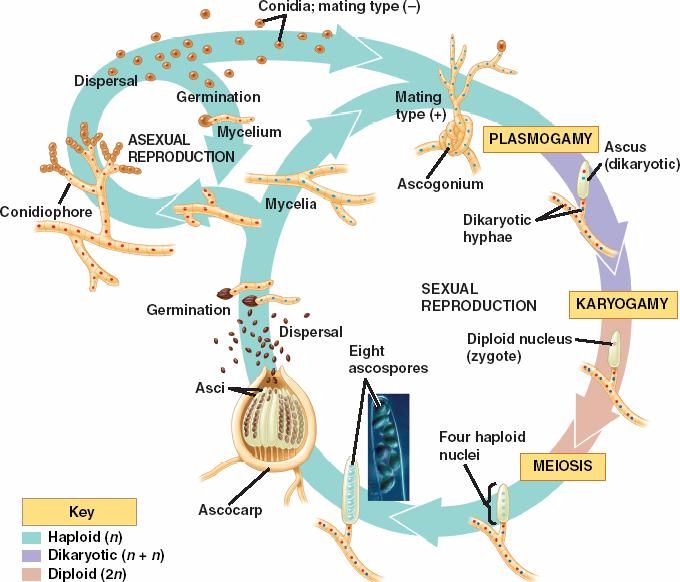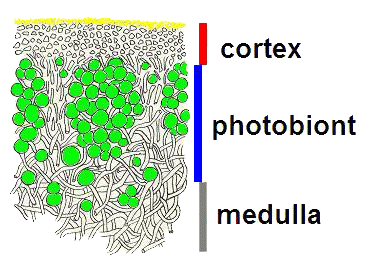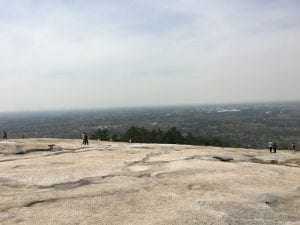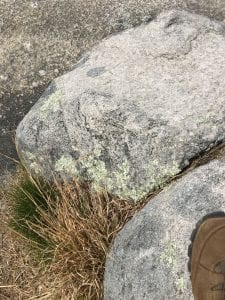
To begin our journey, I climbed Stone Mountain to discover the symbiotic relation of fungi and algae, or cyanobacteria, called lichen. Transitioning from the discussion of their cell structures and the life cycles, we shift our attention to the last stage of our journey now to the usage of lichens to detect air pollution within the environment.
The study of air pollution and the impact of lichen can be observed as early as 1791 in a poem written by Erasmus Darwin, where he states, “No grassy mantle hides the sable hills, / No flowery chaplet crowns the trickling rills, / Nor tufted moss nor leathery lichen creeps / In russet tapestry o’er the crumbling steeps” (Darwin, 1791). This line implicates the effect of copper mines within the area and the effect of the pollution on the surrounding ecosystem, signaled by the nature of the lichen. Since they are strong enough to grow on bare rock but remain easily susceptible to air quality, air pollution directly affects their growth, reproductive potential, morphology, and physiological processes. Tracking these features can reflect significant changes in their respective environments (Nash III, Gries, 1991).
While many plants are used to detect environment changes, lichens are most closely studied in relation to sulphur dioxide present in air pollution (Nash III, Gries, 1991). Sulphur dioxide is absorbed by the fungal part of the lichen, destroying the chlorophyll portion of the algal partner, which inhibits photosynthesis. In order for the algal partner to survive in high pollution areas, the algae supercedes its symbiotic relationship with the fungi and begins to develop independently (Pescott, 2015). Thus the presence of green algae can indicate high levels of pollution.
Sulphur dioxide has caused some species of lichen to become extinct in areas with high levels of air pollution. Certain species of lichen have a higher tolerance for air pollution than others, and the study of which species can be located in certain areas can show how poor the air quality is. Lepraria incana is a species that can tolerate poor air quality of 125 µg/m3 of sulphur dioxide; meanwhile, more sensitive species like Lobaria amplissima cannot tolerate any sulphur dioxide (UK, n.d.). An abundance of Lepraria incana can indicate less competition in an environment, leading to the accumulation of this species. The species of lichen I observed on Stone Mountain is believed to be Lepraria incana, and I observed this species to be present on a multitude of surfaces with little to no diversity. The rise Lepraria incana within Stone Mountain is in line with the rise of soot pollution levels, a byproduct of burning fossil fuels, within the past several years (Rhone, 2019).
In the future we should become aware of lichen within our environments. Since lichens are helpful tools to help determine air quality levels within cities, understanding lichens relationship will also help us understand the ecosystem the lichen live in. The rise of certain species indicate a rise of air pollution, and if air pollution levels are not controlled, the lichen species will begin to disappear from the environment. This can lead to death of plants and animals within the ecosystem untimely affecting our own well being.
Spongebob with suds is the best way to imagine lichen with the increasing air pollution.
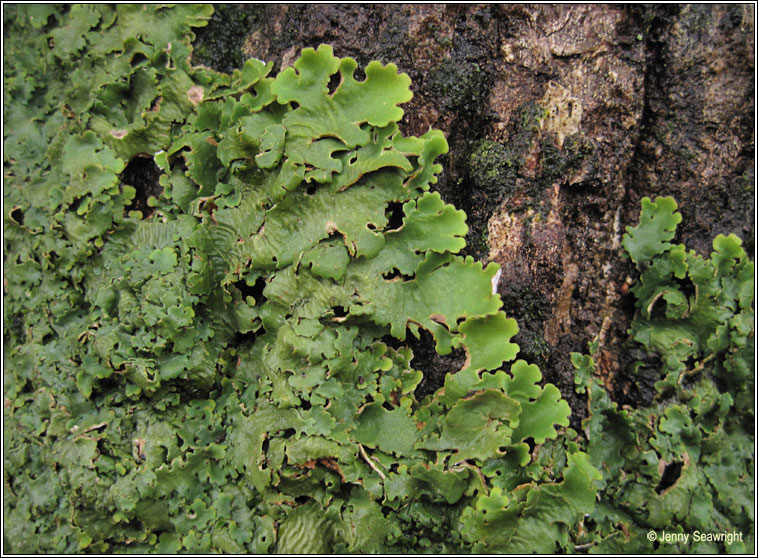
Lobaria amplissima

Lepraria incana

Here’s a video from the natural history museum conducting an air quality experiment using lichen
https://www.youtube.com/watch?v=shl5c73ump0
References
- Darwin E 1791. The Botanic garden: a poem, in two parts . London: J. Johnson.
- Nash T.H., Gries C. (1991) Lichens as Indicators of Air Pollution. In: Air Pollution. The Handbook of Environmental Chemistry, vol 4 / 4C. Springer, Berlin, Heidelberg
- Pescott, O. L., Simkin, J. M., August, T. A., Randle, Z., Dore, A. J., & Botham, M. S. (2015). Air pollution and its effects on lichens, bryophytes, and lichen-feeding Lepidoptera: Review and evidence from biological records. Biological Journal of the Linnean Society, 115(3), 611-635. doi:10.1111/bij.12541
- Rhone, N. (2019, April 24). DEEPER FINDINGS: Five metro Atlanta counties earn a failing grade for air quality. Retrieved from https://www.ajc.com/news/five-metro-atlanta-counties-earn-failing-grade-for-air-quality/C6Csmoq45khlpJMACq0cKM/
- U. (n.d.). Air Quality and Lichens. Retrieved April 24, 2019, from http://www.air-quality.org.uk/19.php



